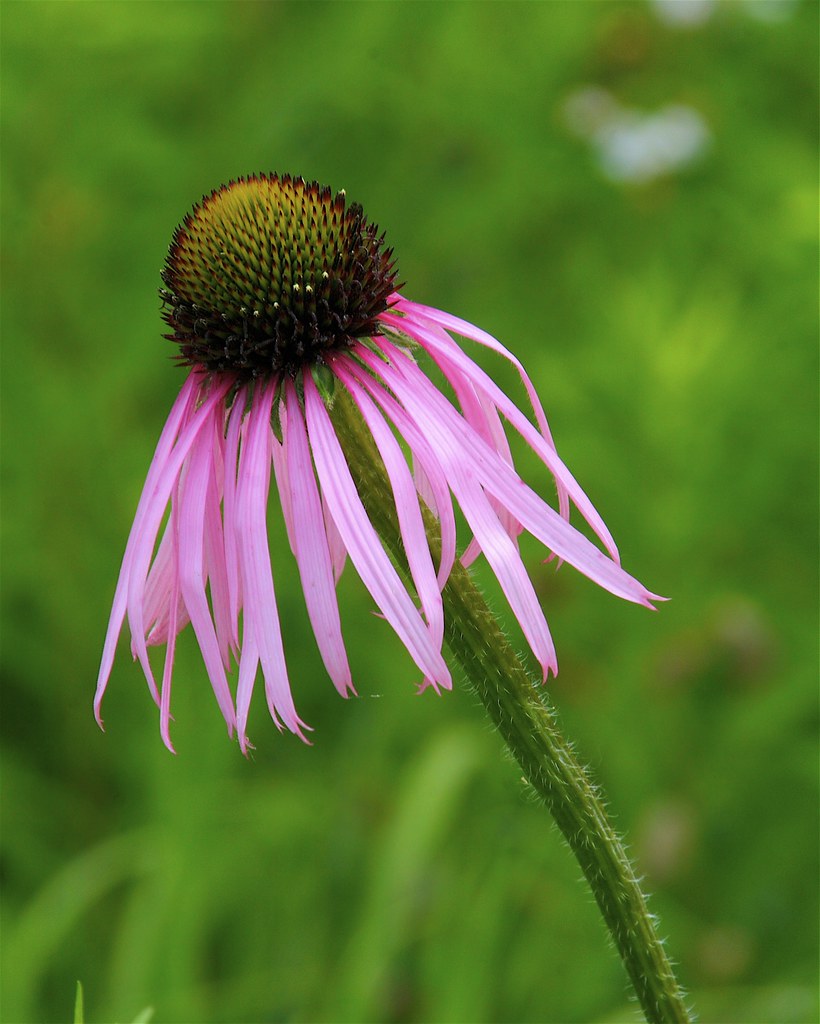The purple coneflower – Echinacea purpurea – is one of the most common, and loved native wildflowers. It is beautiful, easy care, not a deer favorite, and comes in different sizes and colors. We wrote about coneflowers last year, but there have been new varieties introduced, and we have learned more about them, so we thought we could look at them again.
Coneflowers are not indigenous to our region – they are not naturally occurring, you’ll find them growing in moist prairies, meadows and open woods of the central to southeastern United States. But, by our definition of native, which is how functional a plant is in providing food and shelter for all the birds and pollinators that we love, Coneflowers are definitely native! They aren’t invasive or aggressive either, they won’t spread everywhere and become a nuisance. And, they don’t mind our heat, humidity, and sandy soil.

Coneflowers need full sun (6+ hours a day) to flower well, and average to moist soil. Once established, they are somewhat drought tolerant, Their stems are stiff, so they hold up well in a garden. Some varieties have large leavers, and can be subject to some leaf spot diseases, but those mostly cause aesthetic problems, they will rarely kill the plant. They do need good drainage, so make sure your area doesn’t stay wet all the time – moist is ok, wet is too much.
There are a lot of different cultivars (cultivated varieties) available, as well as different species of coneflower. We all know the Purple Coneflower, but do you know the Pale Purple Coneflower – Echinacea pallida? It get 2 to 3’ tall, needs sun to do well, and is tolerant of poor soils. The ray flowers (what look like the petals, see our article last year) are a pale purple, more of a pastel combining very nicely with for example, “Moonbeam” Coreopsis. It blooms a couple weeks earlier than Purple Coneflower, and has a taproot, making it a little harder to move. The leaves are narrower, and the ray flowers droop down very gracefully. All in all, a very pretty plant.
Of the cultivated varieties, one of our favorites is “Pica Bella”. The great botanical garden, Mt. Cuba up in Hockessin, has an excellent research and development program on plants best suited to the Mid Atlantic states. They have published their results and the plants are available at select nurseries and garden centers – ask if your local garden center carries the Mt Cuba Top Performers, or the Mt Cuba Collection! These are plants proven to do well here! “Pica Bella” grows to about 2’, and is compact and covered with rosy purple flowers. Researchers at Mt Cuba noted that it was one of the best at attracting pollinators – butterflies love it too! You can cut a few stems, it does make a great cut flower, but leave a few flowers to develop the seeds for the birds, which are absolutely adorable as they perch on the flowerhead to munch away. Very pretty massed with Black Eyed Susans or Coreopsis, Gayfeather, and Russian Sage, with some Little Bluestem in the background. This would make a great pollinator garden, easy care and beautiful.
Try a Coneflower today in your garden, it’s not too late to plant one, and you won’t regret it!
by Liz Nalle, contributor to the Coastal Point Newspaper
